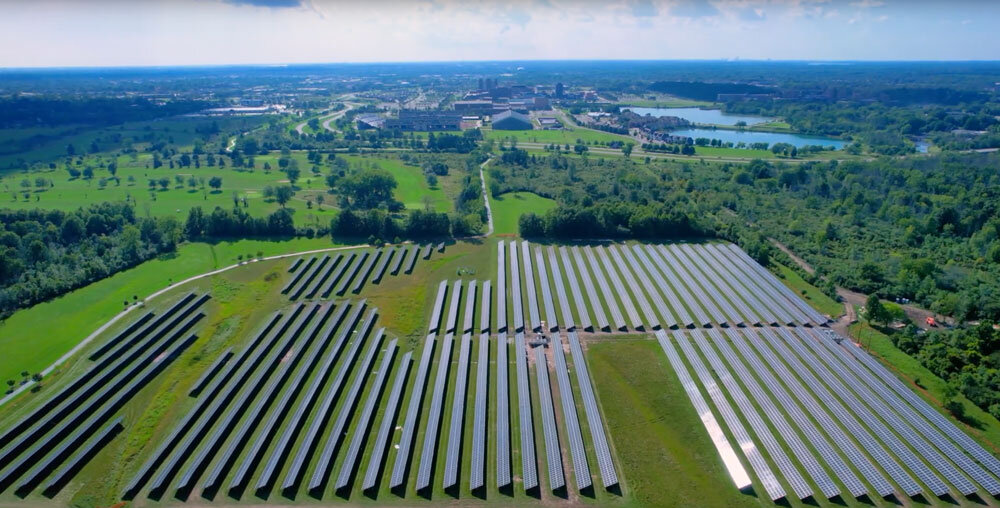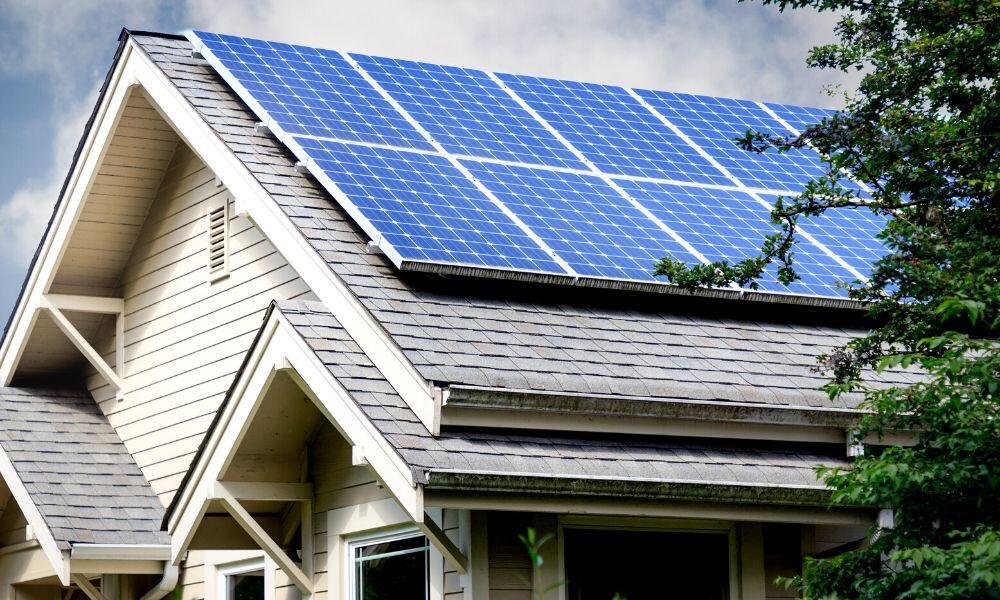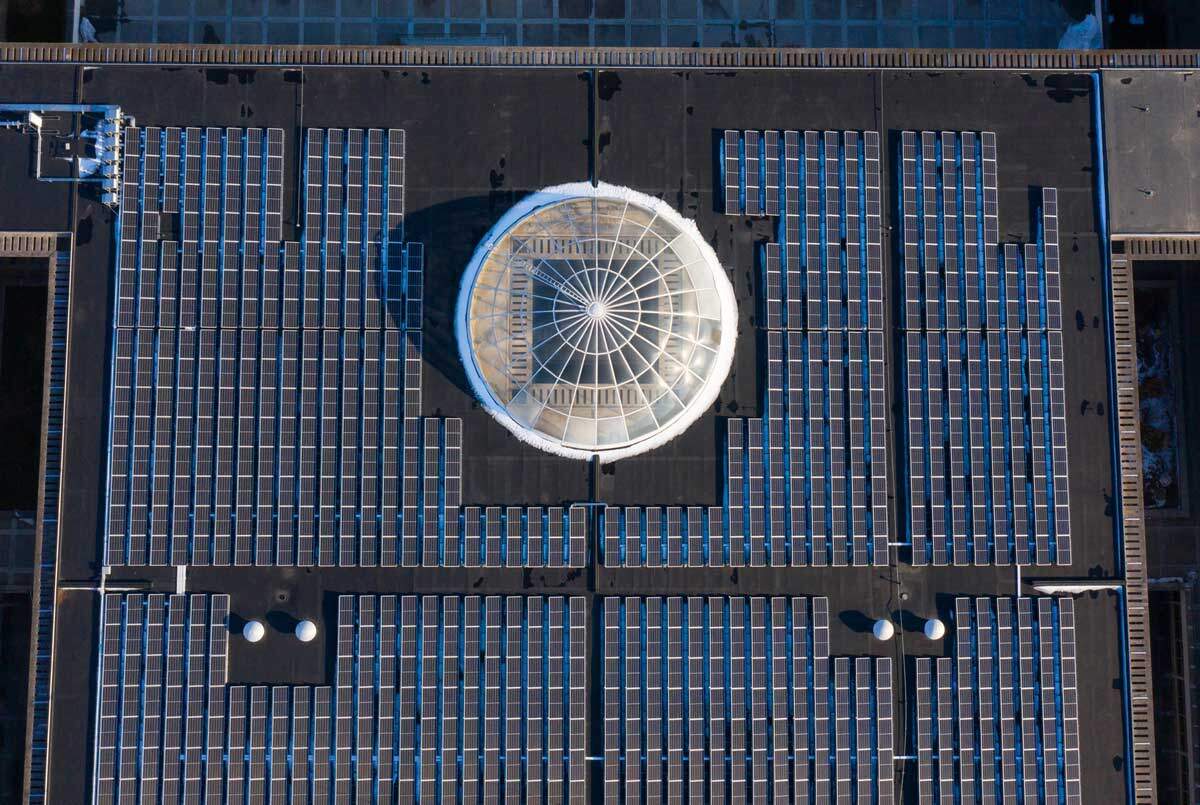Solar Fire Department Expects to Save $200k
Cheektowaga, NY – Bellevue (N.Y) Fire District No. 9 recently installed a Solar Liberty system on its fire station, funded mostly by a grant from the New York State Energy Research and Development Authority. The 140 200-watt solar panels are on track to produce more than 29,000 kilowatt hours of electricity per year for the station, said Nathan Rizzo, the company’s vice president.
Fire District No. 9’s fire station provides fire protection and emergency medical services in the town of Cheektowaga, N.Y. It covers about 7 square miles and responding to approximately 500 calls annually. Jamie Casucci said that when he became fire commissioner, the energy cost of operations was high. He then met with leadership and pitched alternative energy sources to save money on daily operations.
“I looked into solar paneling, wind turbines and windmills,” he said. “I called several companies to come talk to us about and Solar Liberty was the only one who responded. Everyone else said it was too small a project and didn’t want to do it.”
In Buffalo, there are 167 days of 50% sunshine, Casucci said. So solar systems made sense. To pay for the nearly $175,000 project, Solar Liberty completed the grant application from the Energy Authority, which awarded $137,000; and the fire district came up with an additional $37,000.
The company then installed the solar-electric system on two sections of the firehouse. Rizzo said the panels are clamped on and secured to the building’s pitched roof. He said the system then is tied into a distribution panel in order to provide supplemental power. It also is connected to the utility company.
“So the building is still connected to the utility grid,” Rizzo said. “But it when the sun is out, they can be producing power from the sun.”
The system is rated to produce 28 kilowatts worth of DC power based on laboratory tests. However, in the field, electricity produced varies, Rizzo said. For example, the lab tests cannot take into account the amount of sunlight captured and the efficiency of silicon-cell modules (solar cells). It also can’t predict the efficiency of the inverter, which transforms the system’s DC power into the AC current used in buildings.
“So we have to transform that power via an inverter,” he explained. “And so it should produce at least 23 kilowatts AC, even though it’s rated at 28 kilowatts.”
Rizzo said production rates also vary based on the time of the year, since the system is dependent on the sun. The firehouse is located in western New York, which usually is hit with harsh winters. Therefore, the system production is based on a bell curve, with more energy being produced throughout the summer and then tailing off in the winter months.
“It’s constantly fluctuating,” he said.
With that in mind, Rizzo expects the system may offset 12% to 14% of the fire station’s electrical consumption.
“That amounts to about $4,300 a year,” he said.
The solar cells have a half life, because they degrade over time. So the company offers a 25-year warranty. Rizzo said the system could last up to 40 to 50 years.
“Even if just take the warranty — 25 years — the department’s utility system lifetime savings taking into account inflation would be $191,000,” he said. “That equals 17.4% annual rate of return on investment.”
In addition, the department is producing its own electricity onsite — hedging on future rate increases — and the station is a green building. Rizzo said the system will offset the building’s carbon footprint by 501 tons of CO2 during the next 25 years of solar electricity production.
The funding is out there to support solar installation programs. However, Casucci advised chiefs to move quickly on energy grant applications and seek out additional areas for costs savings — such as swapping out light bulbs with low-energy bulbs. Such energy conscience ideas are catching on, as he’s already talked about the project’s success and choosing alternative energy to power operations with the city’s eight other commissioners.
“I’ve talked to the other eight commissioners and they are looking into it, too,” Casucci said. “I’d like to see all of the districts in the town go to solar power.”
Fire Chief Magazine
By Mary Rose Roberts




